Stronger Together: how can tennis continue to advance gender equality?
By Steve Tignor Mar 08, 2020Richard Gasquet given Monte Carlo wild card 20 years after breakthrough win over Roger Federer
By Ed McGrogan Apr 03, 2025Wolfgang Puck: The biggest tennis fan in the kitchen?
By Mitch Michals Mar 12, 2025Serena Williams, Roger Federer, Aryna Sabalenka and pickleball all featured during Super Bowl LIX
By Liya Davidov Feb 13, 2025Roger Federer’s Wimbledon-winning racquet sells for more than $100,000 in tennis auction
By Liya Davidov Feb 10, 2025Roger Federer explains tennis scoring, On logo to Elmo in Super Bowl ad
By Baseline Staff Feb 10, 2025Roger Federer’s Wimbledon winning racquet currently up for auction
By Liya Davidov Jan 28, 2025Henry Bernet, Australian Open junior champion, takes inspiration from fellow countrymen Roger Federer and Stan Wawrinka
By Associated Press Jan 25, 2025The best tennis fashion moments of 2024: Federer & Nadal for Louis Vuitton, Kostyuk's viral Wimbledon dress and more
By Stephanie Livaudais Dec 14, 2024The year of Tenniscore: How the 'Challengers' effect transformed tennis fashion in 2024
By Stephanie Livaudais Dec 09, 2024Stronger Together: how can tennis continue to advance gender equality?
In 1970, the Original 9 held up dollar bills and started a women's tour. Fifty years later, a new generation looks to carry on their legacy.
Published Mar 08, 2020
Advertising
It was the spring of 2017, and Sloane Stephens was sidelined with a foot injury. In her downtime, the future US Open champion tried her hand, and her sense of humor, as a talk-show host for Tennis Channel. Stephens was a natural, of course, and not afraid to dig into her fellow players’ private lives, most memorably in her interview with Vasek Pospisil.
After a few quips and giggles between the American and the Canadian, Stephens got down to the business at hand.
“I hear that you’re single and ready to mingle,” she said, before ticking off Pospisil’s selling points to any potential suitors in the audience: “He’s playing great tennis! He makes lots of money!” By the end of the week, ESPN.com was calling for Stephens and Pospisil “to have their own TV show.”
Fast forward two years, and while they hadn’t turned into a comedy duo, Stephens and Pospisil had teamed up again in a more significant way. By the end of 2019, they had reached across the aisle that typically separates ATP and WTA players, and joined forces in an effort to pressure the Grand Slams for more prize money. The verdict is out on how effective that initiative will be, but it was a sign of cooperation in a sport where men and women have traditionally fended for themselves, which the men have been OK with.
“What affects one side affects the other,” Pospisil said.“It just makes sense to collaborate and communicate, especially at the Grand Slams.” “I’m really super-impressed with Sloane,” he added. “I had some good conversations with her.”
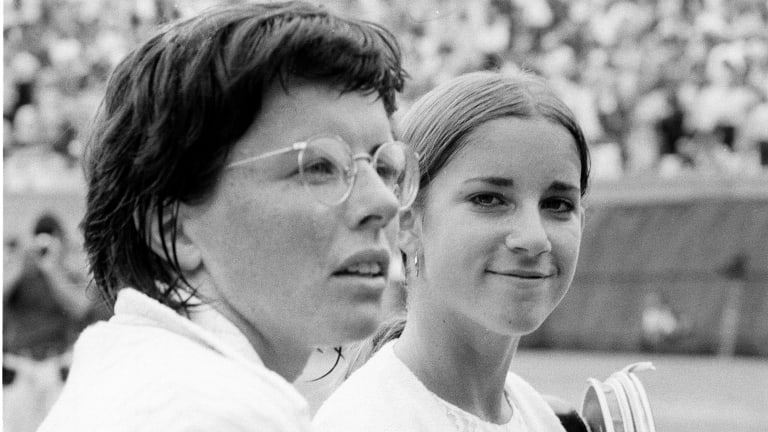
Stronger Together: how can tennis continue to advance gender equality?
© 1971 AP
Advertising
Billie Jean King's message of equality has been heard for decades, and spread by WTA peers like Chris Evert.
Stephens, who turns 27 in March, was elected to the WTA Player Council last year. There she joined a new wave of younger members that includes Donna Vekic, Madison Keys, Anastasia Pavlyuchenkova and Johanna Konta. Together they reflect a tour that, with the rise of new stars like Sofia Kenin and Bianca Andreescu, appears to be undergoing a generational shift. Will the new blood on the court be matched by new ideas off of it?
“I’m really excited to see the ATP and WTA join forces in this campaign,” U.S. pro Nicole Gibbs says. “There had been whispers about this sort of push for a while, and I was concerned the ATP might not include the WTA in their advocacy. Seeing the ATP make teamwork a priority is awesome, and speaks to the quality of player advocates on both tours.”
The subject of gender equality in sports is in the headlines again, as the U.S. Women’s National Soccer Team pushes for equal pay and equal treatment with the men’s national team. It’s an issue that tennis has dealt with for much longer than any other major sport. This year marks the 50th anniversary of the start of the first all-women’s tour, the Virginia Slims circuit, an occasion forever commemorated by the photo of the Original 9 women pros holding their one-dollar bills high in Houston in September 1970.
Half a century later, with soccer stars like Megan Rapinoe taking up the banner for female athletes, the question may be: How does tennis continue to advance the cause of gender equality in the sports workplace? Equal pay, after much foot dragging, has been achieved at the Grand Slams. What should this new generation of WTA players, and their sympathetic ATP counterparts, push for next?
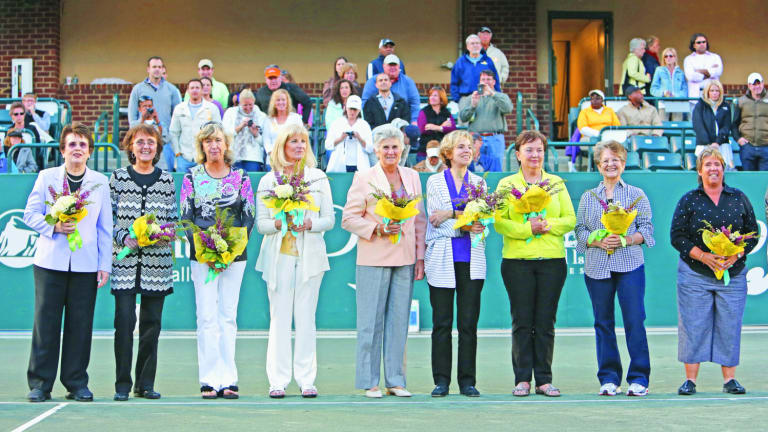
Stronger Together: how can tennis continue to advance gender equality?
© All Rights Mic Smith Photography LLC
Advertising
The Original 9: Billie Jean King, Peaches Bartkowicz, Kristy Pigeon, Valerie Ziegenfuss, Judy Tegart Dalton, Julie Heldman, Kerry Melville Reid, Nancy Richey and Rosie Casals. Despite threats of losing their national rankings and being blocked by the majors, these women signed $1 contracts with Gladys Heldman on September 23, 1970, for the first Virginia Slims Invitational at the Houston Racquet Club.
The first person to ask, of course, is Billie Jean King. At 76, the woman once dubbed Mother Freedom believes there’s just as much to fight for now as there was in 1970.
“Coretta Scott King has this great quote—do you know it?—about how struggle is a never-ending process,” King says, “and every generation has to fight for its own freedom.”
For King, that fight began in the 1960s with the drive for Open tennis, a movement that briefly united male and female players.
“The plan was to be together, and we could change the world,” says King, who in 1968 joined the first modern dual-gender pro tour, the National Tennis League, with Rod Laver, Ken Rosewall, Rosie Casals and other stars.
But the dawn of this new era came with a pair of “rude awakenings” for King. After winning the first open Wimbledon, in 1968, she looked down at her winner’s check and saw that it was for $750, instead of the $2,000 that Laver would receive the following day. (“I thought, ‘Wow, that’s a pretty big difference,’” King says.
Soon after, the National Tennis League folded. While the male players’ contracts were snapped up by Lamar Hunt’s WCT Tour, the women were left in the cold. Instead of changing the world together, King and the Original 9 had to change it on their own.
“I don’t think people realized when we held up those dollar bills, the men would freeze us out,” King says.
Fifty years later, King can sound wistful for those heady years of revolution on the courts. In comparing the game’s past and present, she holds onto the ambitious dreams of the ’70s, even as she remains hard-headed about what constitutes success for women in sports.
“We still need to ask, ‘How many women have jobs in the business?’” King says. “How many can make a living?"
To her, success of the American soccer-players’ quest depends less on the national team, and more on whether they can make their sport viable at the professional level. “I want to hear about the leagues, and how they can be sustained,” King says.
When it comes to tennis in 2020, King still dreams the old dream—for the men and women “to be together.” In the five decades since she first entertained that idea, tennis has slowly fulfilled her vision for its future. You can see it in the prize money the women command, which topped out with a record $4.42 million winner’s check at the WTA Finals last year. You can see it even more clearly at the big dual-gender tournaments, which are now the game’s most popular and lucrative events. Yet rather than combine their marketing power, the tours remain separate; the men and women play the same sport, but work for two different companies.
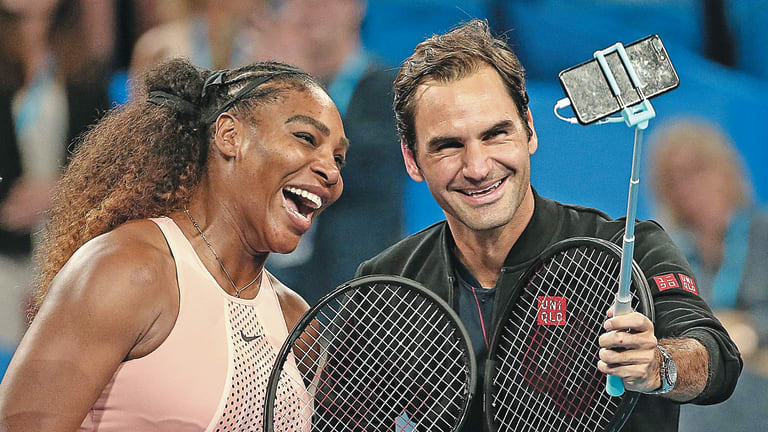
Stronger Together: how can tennis continue to advance gender equality?
© 2019 Getty Images
Advertising
Today, tennis royalty such as Serena Williams and Roger Federer can earn the same prize money on the Grand Slam stage. The US Open was the first major tournament to award equal pay, in 1973, when both champions took home $25,000. Twenty-eight years passed before another major, the Australian Open, followed suit. Pay parity was finally achieved across the board in 2007, when Wimbledon went equal.
“In a perfect world, we’d have one association,” King says. “They don’t have to be tied at the hip, or play every event together, but the interests of the men and women would be aligned.”
What King would like to see in today’s players is a commitment to more than just their own bottom lines. The WTA’s early trailblazers had to do whatever they could to help their tour thrive.
"Players worry about money, and what comes next for them. I wanted to understand budgets, sponsorship, ownership, all of their challenges,” says King, who has advocated for the WTA to create a “rookie school,” to teach young players the business side of tennis. “I’d always talk to tournament directors; they risk a lot for the players.”
If today’s players have become more adept at promoting anything, it’s themselves. But according to Courtney Nguyen, who writes the WTA Insider column on the tour’s website, that newfound power over their images has led to its own form of progress.
“I think we’ve moved on from the time of glamorizing the athletes and making aesthetics the focal point,” Nguyen says. “With social media, that control is now in the players’ hands. I think that’s a great evolution, to see the players celebrated for their athleticism, toughness and achievements.”
As Billie Jean and Coretta Scott King knew, though, every progressive action comes with a reaction.
Despite the success of dual-gender tournaments, the sport has swung back toward men’s-only events. Laver Cup, ATP Cup, the Next Gen ATP Finals, the new-format Davis Cup: all have debuted since 2017, all are backed by major national federations, but none have made room for women. (The Fed Cup will implement a similar updated format this year.) At the same time, Hopman Cup, a semi-serious exhibition that had brought men and women together to kick off the season since 1989, was discarded this year.
To Nguyen, these developments send a “fairly consistent and very disheartening message.”
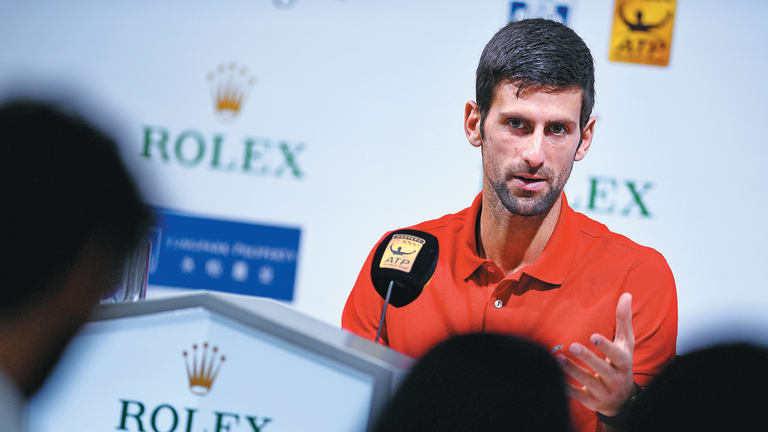
Stronger Together: how can tennis continue to advance gender equality?
© AFP via Getty Images
Advertising
Like the WTA, the ATP has a player council in place to advocate interests and address grievances. Novak Djokovic (President), Kevin Anderson (Vice President), Roger Federer, Rafael Nadal, John Isner, Sam Querrey, Yen-Hsun Lu, Bruno Soares, Jurgen Melzer and Vasek Pospisil comprise the current elected group, whose term runs through Wimbledon this year.
If anyone is going to overcome the sport’s obstacles to progress, history says it will be the players. From the Original 9 in 1970, to the Wimbledon men’s boycott in 1973, to the “Parking Lot Revolution” that formed the modern ATP in 1988, meaningful change in tennis has come when its athletes band together.
King, for one, has high hopes for the WTA’s new stars.
“I think Bianca [Andreescu] is amazing; she could be a leader, rather than just a great player,” King says. “Ash Barty has been great, too; she comes from the team-sports world. I listen to their winners’ speeches, and I like that they say “we” instead of “‘I,’” and really mean it.”
Gibbs says that she has seen attitudes change on both sides of the gender aisle. Andy Murray, who may be the first ATP player to describe himself as a feminist, has called for equal pay across the board; Pospisil and Stephens have thrown aside convention to work together; and there’s youthful energy on the WTA Player Council. The idea of a co-gender player union no longer sounds as fantastical as it once did.
“I think this latest push for player rights has been a beautiful example of the tours coming together and seeing the potential that we have as a combined force,” Gibbs says. “It sounds cliché, but I think the tours are steadily realizing that we’re stronger together.”
“Stronger together”: It’s a slogan that failed to win the day in the 2016 United States presidential election, and it may fail to win the day in tennis, too. As long as the tours are separate enterprises, they’ll have separate agendas. Still, the sport remains one where a female athlete like Stephens can evolve from talk-show host to tour leader.
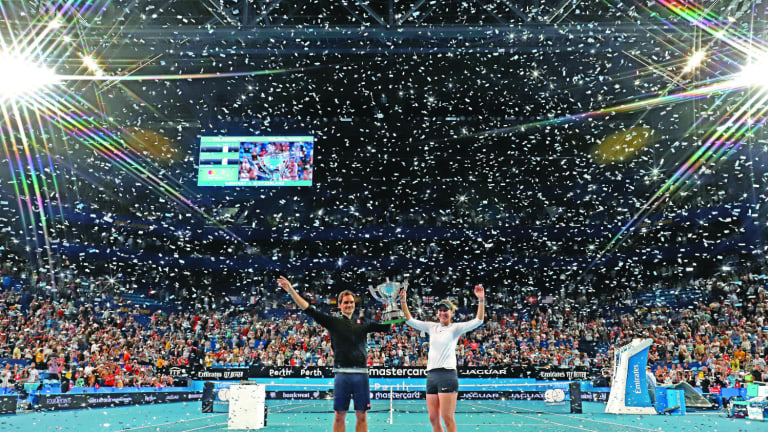
Stronger Together: how can tennis continue to advance gender equality?
© 2019 Getty Images
Advertising
The mixed-gender Hopman Cup was not staged in 2020, making way for the ATP Cup. The men’s-only team event was held across three cities in Australia, but drew criticism when scheduling in Brisbane pushed prominent WTA players, including world No. 1 Ashleigh Barty, off Stadium Court. “They got what they wanted, girls to the side,” Sloane Stephens said.
Stephens, who admits that she hasn’t always loved life on tour, and who may be most famous for gawking at the size of her US Open champion’s check in 2017, might seem an unlikely candidate for a politician. But her experiences as a teenager helped her understand the trials of players fighting their way up the rankings, in a sport where few outside the Top 100 earn a decent living.
“I feel like the girls that are [ranked] below us that struggle a bit more, they deserve a little bit more, because they’re part of our tour,” Stephens told Reem Abulleil for TENNIS.com last fall. “I think now the tides are changing a little bit, it’s getting a little younger. I think they just need a little bit of support.
My biggest thing will just be making sure they get that support.”
Helping more players make a living: it’s a concern shared by all of Stephens’ fellow Player Council members, on both the ATP and WTA sides. If they can make that happen, they’ll be carrying on the work of King and the Original 9. Fifty years after they hoisted their dollar bills, their legacy still leads the way.
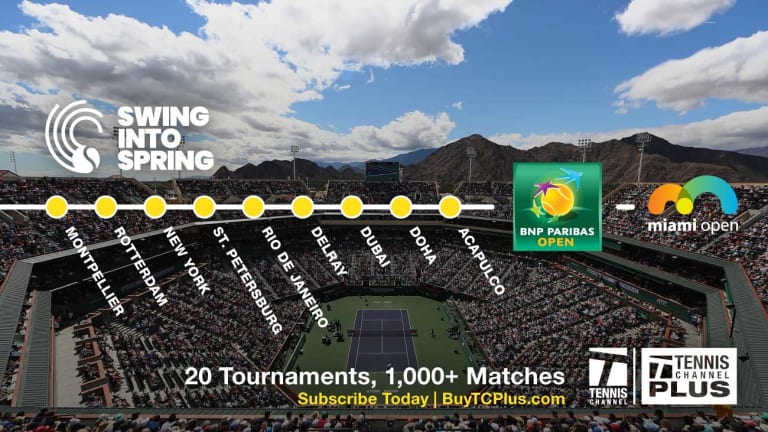
Stronger Together: how can tennis continue to advance gender equality?